July 16, 2017
Martha O'Kennon
Humid. Last week we had thunderstorms with hardly any rain. This week hardly any thunder or lightning, but a couple of good soaking rain showers. As usual, a few good bloomers shared a few lovely blossoms. Here's the faithful lemon lily shared by my neighbor John. Then the huge single flower on the stalks of the lily Carol gave me for my birthday years ago. Last year it had three, count'em, three enormous flowers, each one the size of this one. And the phlox that had just popped open last week is in full flower now. This phlox moved itself from the comparatively sunless spot it had been told to stay in by someone who owned the house before me. Now you know plants don't bother to obey my every wish, but sometimes they get it right and I reward them by letting them stay for free in the comparatively sunny spot. You'll probably be sad to hear that the trumpetvine that was in full bloom last week is much diminished. Good thing too. It took advantage of my slowness to prune it and had made an obstacle course of another flavor - you had to duck all those heavy flower clusters or ram them with your hand over your eyes. Fortunately or not, most of the wasps I eagerly await till now were NOT fighting me for the trumpetvine. But it is about time to get out the epi-pen, just in case.
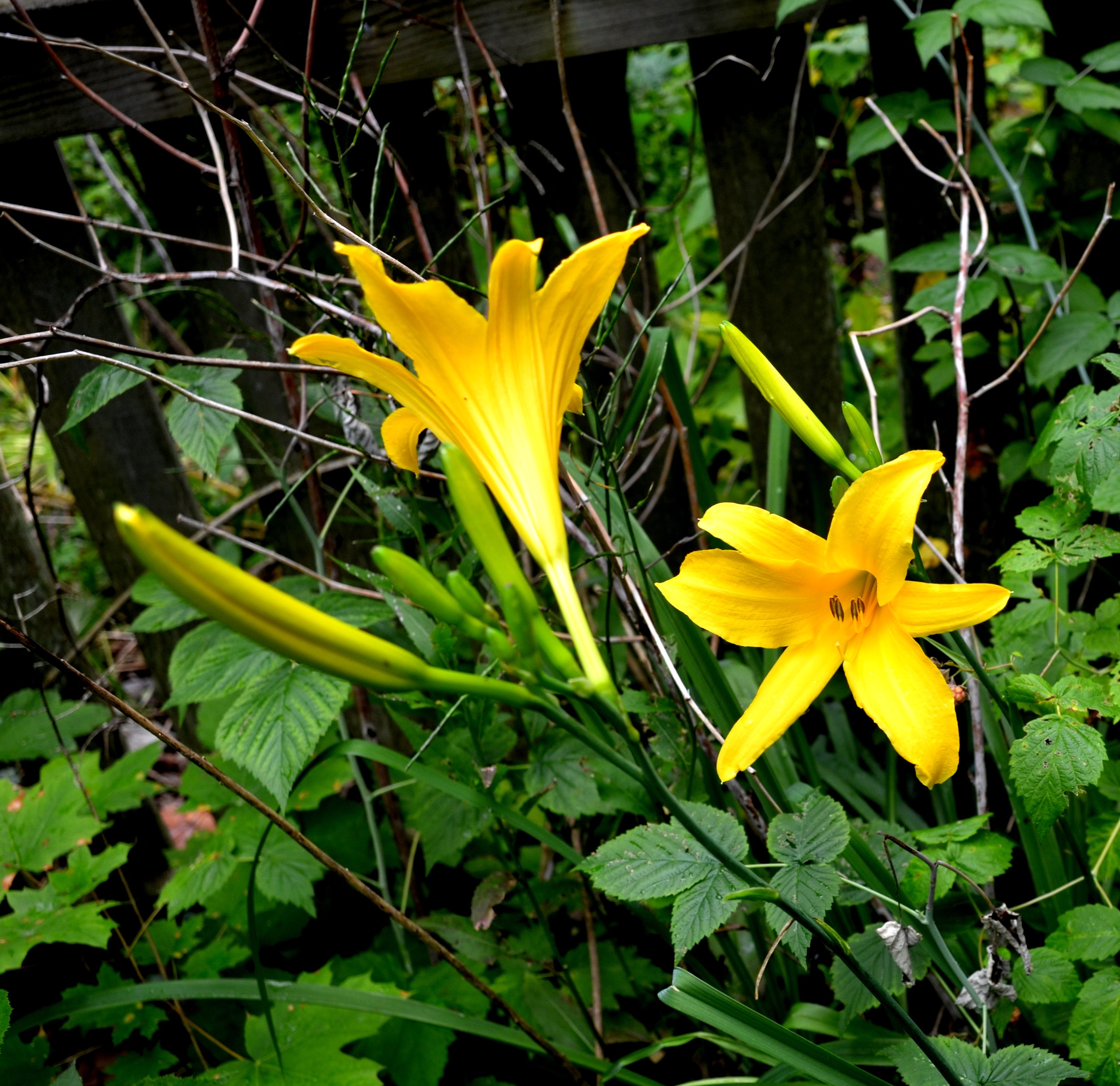
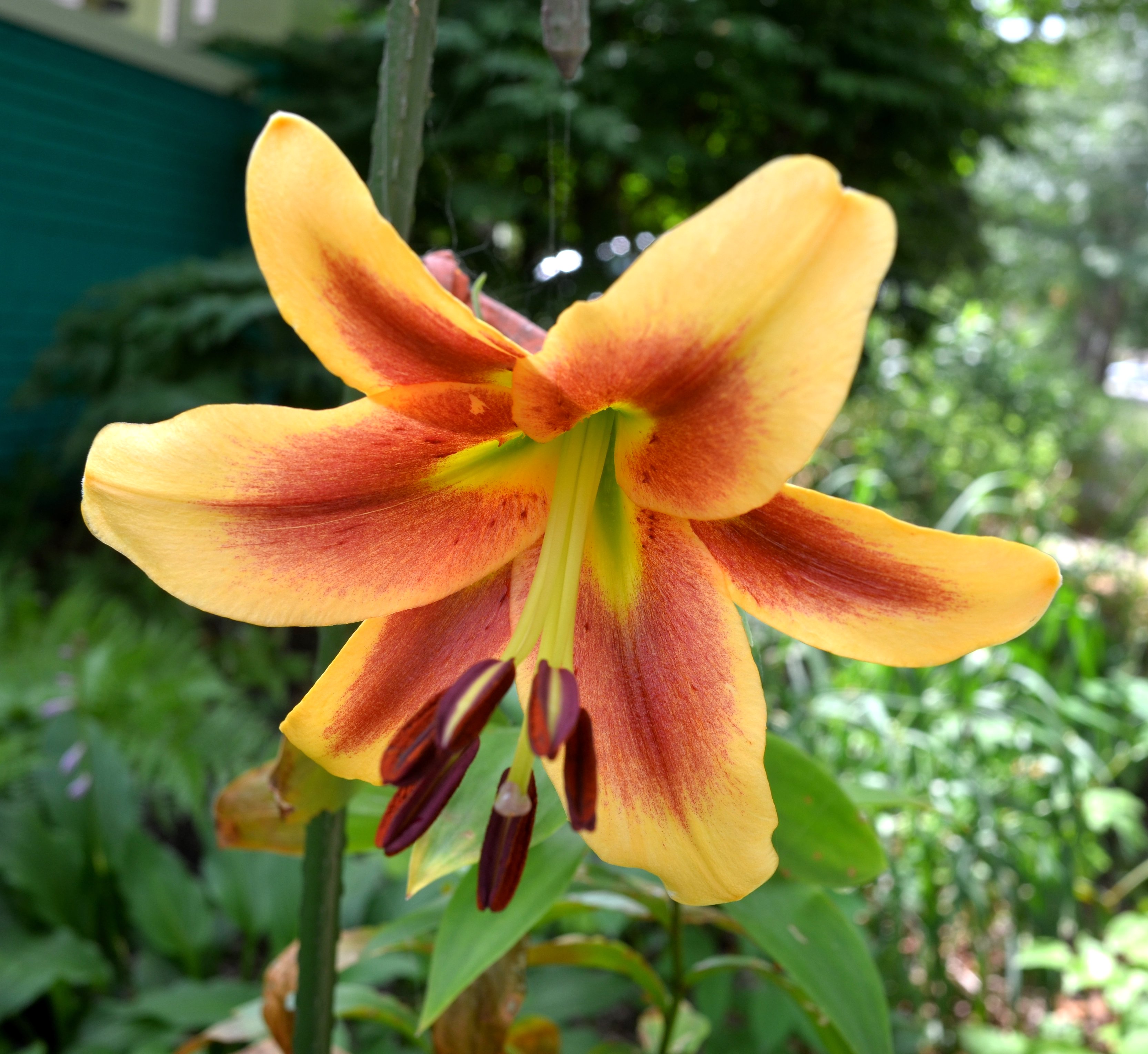
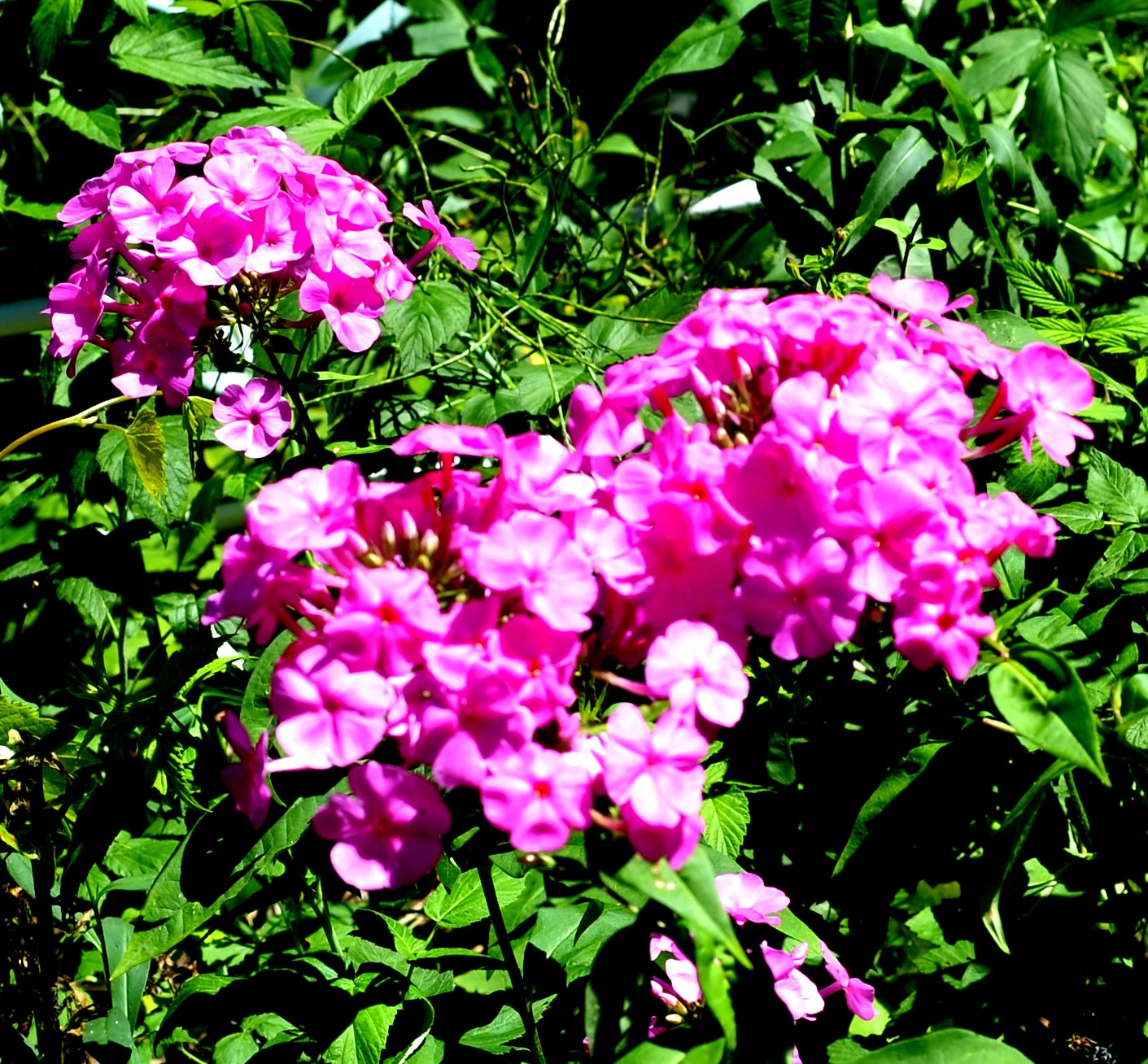
Remember that there is information in the name of the file for each image. You can see it by mousing over the image - look at the lower left of the screen. Or you can click on the image to get to the (usually) larger image. Then the info is displayed in the address line above. Sometimes the second click will actually display a different view of the original image.
You know that I spent quite a lot of time last year searching for aphids. There were a couple of goldenrod plants last year that showed us their ability to attract aphids, and had a succession of colors of them through the summer. As I recall, they started with green aphids, then a few weeks later, the red aphids had taken control of the colony. And then I started seeing black aphids in another part of the yard This year I haven't seen any red aphids or black ones, just one or two shafts of goldenrod with flower buds and a small colony of green aphids. Here is one with all green aphids but one tiny possible red one. Another thing that made last year a memorable one for aphids and goldenrod is that it was the first time I'd ever seen an insect give live birth. The first one was a red aphid and then the greens began to push out tiny other greens from the end of their abdomen. They also reproduce by egg-laying, but learning that they can give live birth was my first big surprise of 2016! Actually my best pictures of aphids in goldenrod were earlier in the week (July 11, 2017). Here is a picture that took a goodly bit of time for me to see anything but aphids and goldenrod leaves. At some point I decided to enlarge a shot of this colony. As I cropped it, it struck me that one of the lower leaves was somehow different in shape if not color from the rest of the leaves. I finally enlarged that part of the picture and at some point realized that the insect at the lower part of the picture was a pale green lacewing! Lacewings are such great predators of aphids but you rarely see one because you have to juggle your eyes somewhat to "get it" . :-)
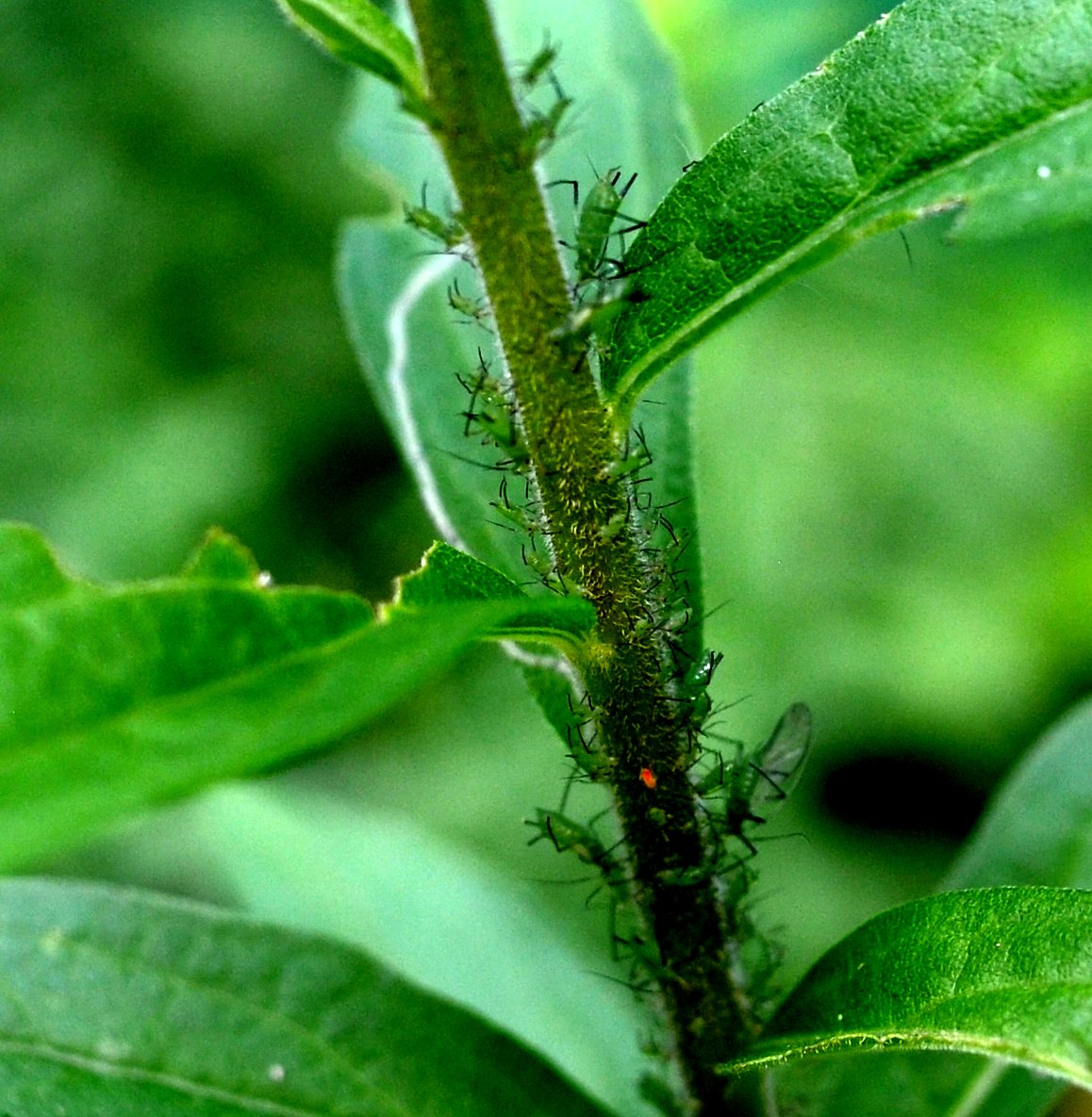
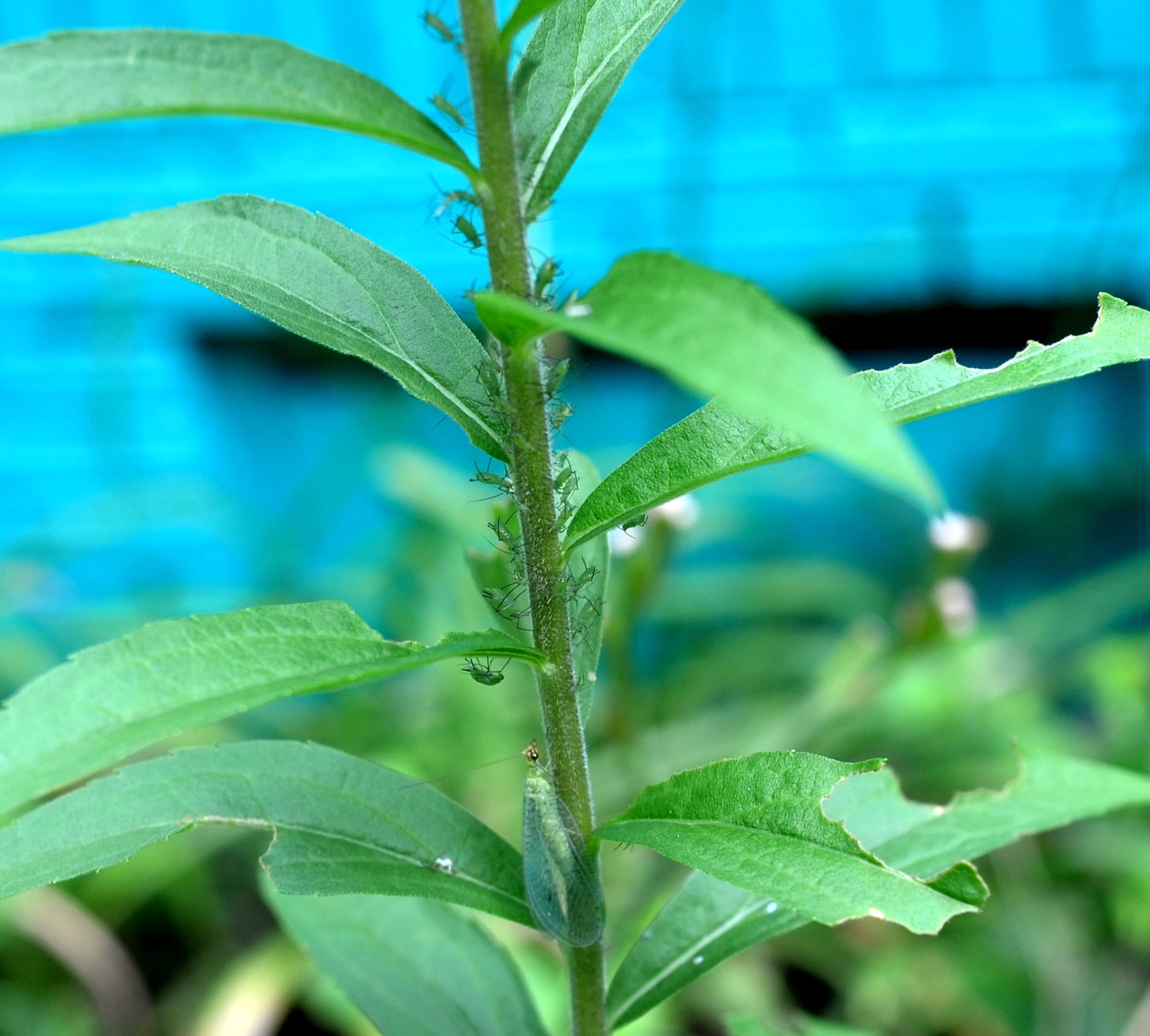

The barklice continue to increase in number and size. Now they are about 2-3 mm (that's an eighth of an inch) and if you could really squint at them you might be able to distinguish which kind they are. This very tired honey bee was resting on the walk to the shop. Finally it got to its wings and disappeared. Those little tiny bees were hard at work too. Here is one resting on a leaf.
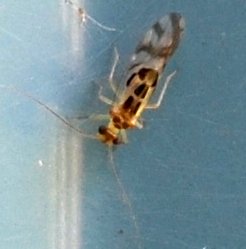

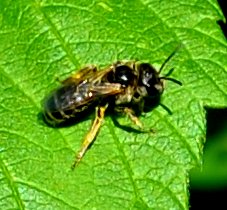
Here is another tiny bee sitting on one of the pretty flowers at Gina's new restaurant. Last is a big bumblebee - last year when I sent this scruffy thing to Bugguide they said it was a Common Eastern Bumblebee. I had thought the scruffles were a sign of some kind of feral bee!
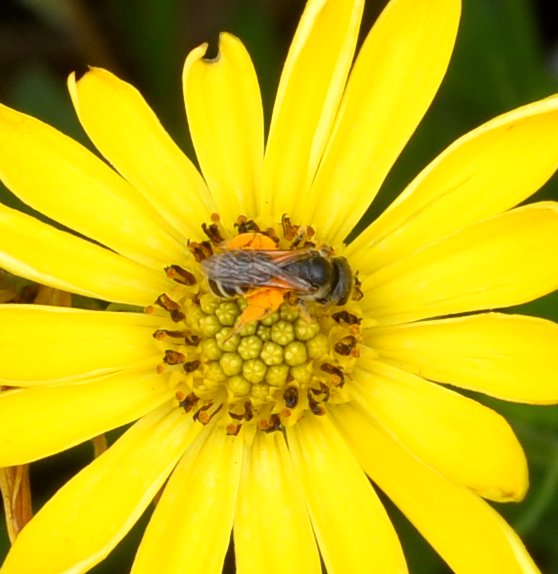

There were plenty of beetles around again. Most of them I haven't matched up with pictures in my book. But here are two little brown beetles and a lightning beetle that is much smaller (only about a half inch long) than others we've seen.
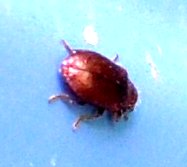

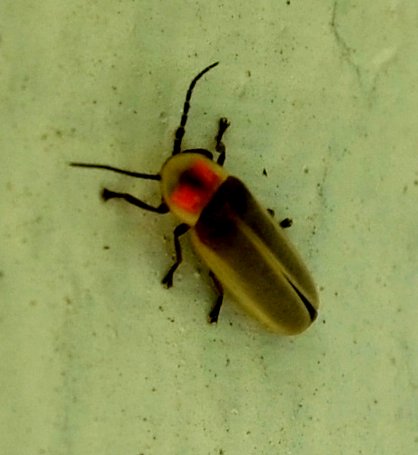
Here are two kinds of click beetles, a brown one without much to add to help in its identification, and a big one with enormous eye spots (not real eyes, just "painted" on) found by my friend Tim. I know it looks as if the big-eyed clicker is only the same size as the first beetle, but it is really many times its size. Third is a leaf miner, most likely Sumitrosis inaequalis.
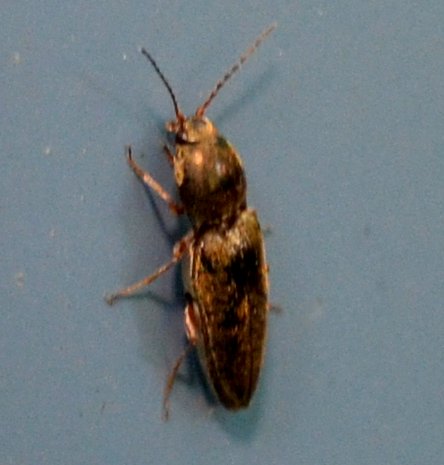
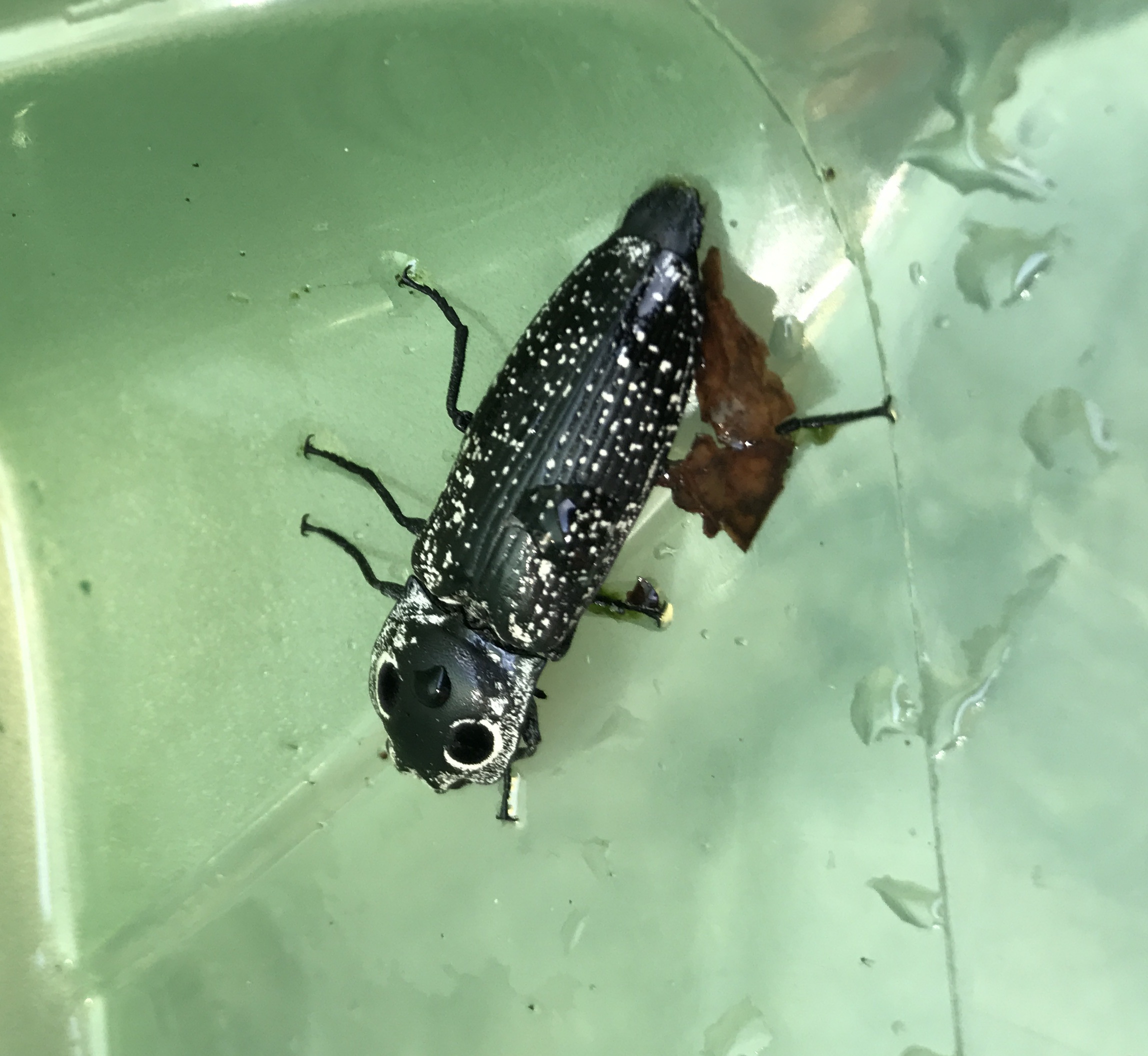

Of course the tiny metallic olive-colored beetle was here. Here are two tiny beetles (or maybe the white-margined burrowing bug?) eating the seeds of the goutweed.
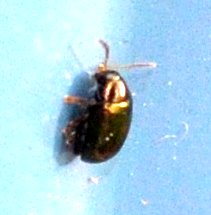
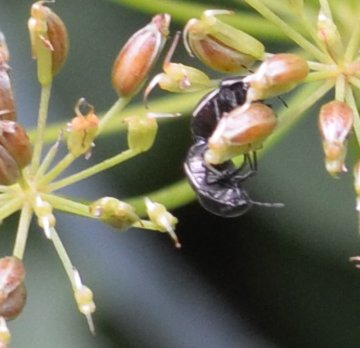
This weevil was on the outside of a day lily with the sun coming through to make a clever silhouette. But you can make out the gold studs on the elytra - the hard case covering the wings - and so identify it as a Black Vine Weevil. I also caught a similar-looking but brown one on the shop base. No gold studs though, so it remains unidentified by me. Finally this tiny redbud bruchid in the heart of a common tall evening primrose.
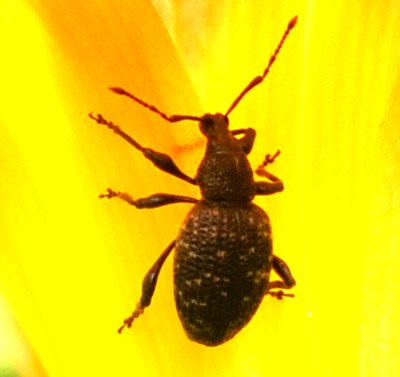

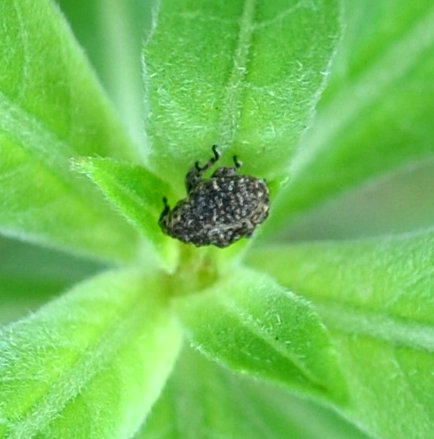
The bugs also sent a good number of representatives. Finding the various colors of leafhoppers is like collecting prizes from a Cracker-Jack box. Here is a reddish one, a group of bluish ones that otherwise look like Aphrodes (brown stripes), and finally a Scaphoideus leafhopper, the one that always reminds me of a floral fabric print.
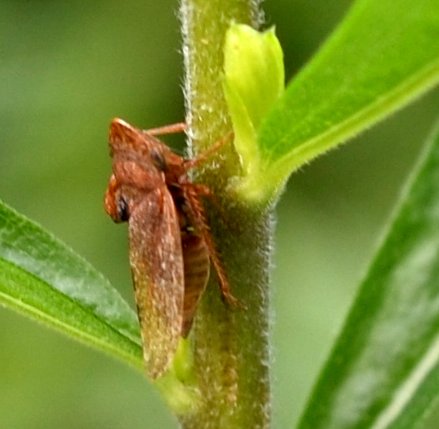


Here is the nymph of a leafhopper Coelidia olitoria - they are so cute and come in such a large number of colors and patterns. This one bravely faced me down, rocking on its legs and seeming to be looking me in the eyes. The second one seems to be a leafhopper being attacked by - Something.
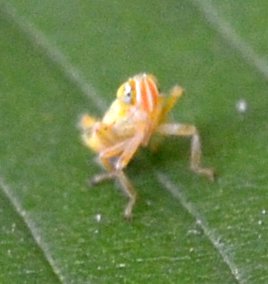
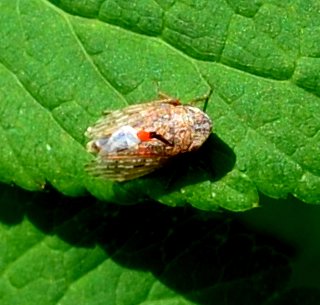
Here are three non-leafhoppers. The first one is a planthoppers, the Citrus Flatid Planthopper. Next is the nymph of another kind of planthopper, of genus Thionia. Third is the Meadow Spittlebug. Fourth is the Alder Spittlebug, which we saw so many of last year.
 7 13 17 1.jpg)
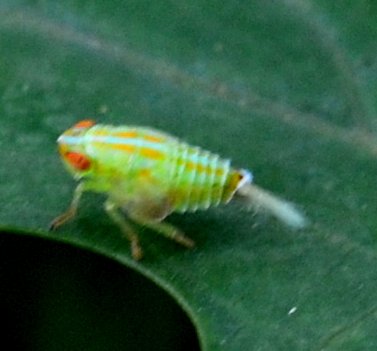
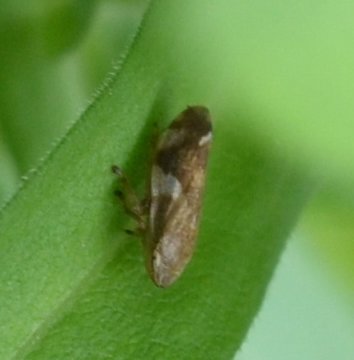

There was at least one "real" ("true") bug. I have no idea what it is though, sorry! There was also at least one kind of centipede (or millipede?). They look different every time you look!
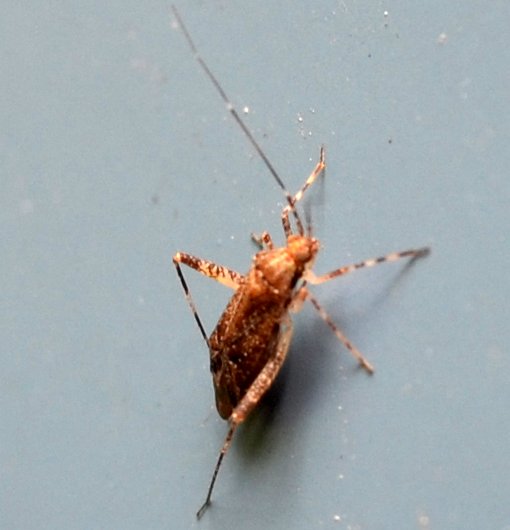

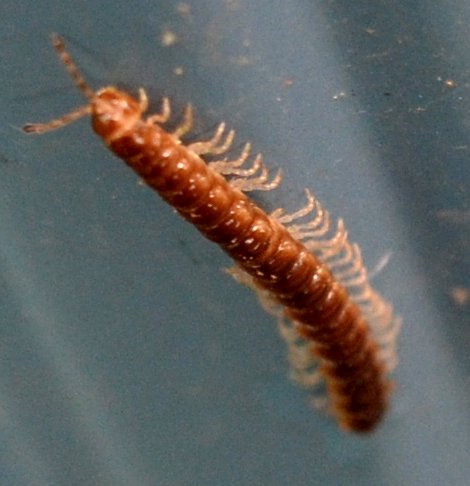
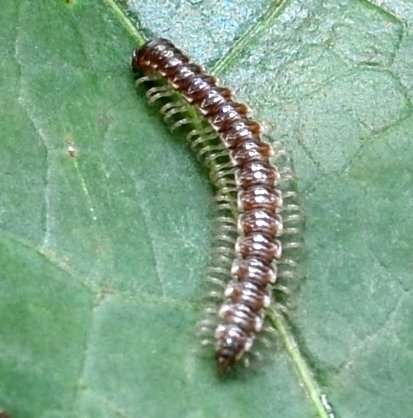
The one damselfly I saw this week was perched on a stem and I got one shot of it before it started flying about and finally landing on a different location. So this terrible shot is all I got of it. At least we can see the golden stripes on the thorax. But this little Autumn Meadowhawk came to visit and let me get three sides - just no face shot. This European earwig (you can tell from the markings on its midsection.) and this fish family portrait (as many as I could capture in one frame) complete the pre-fly section of pictures for this week. Look how fast the little babies from last fall have grown now!
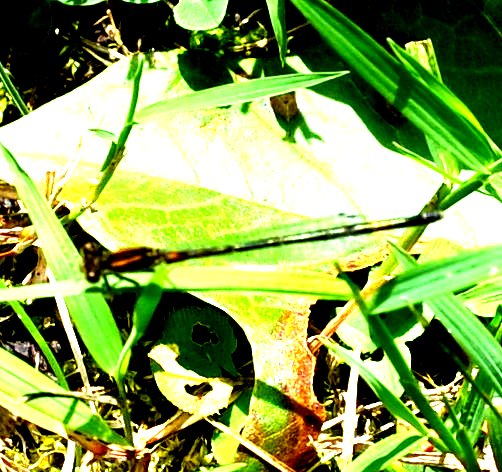
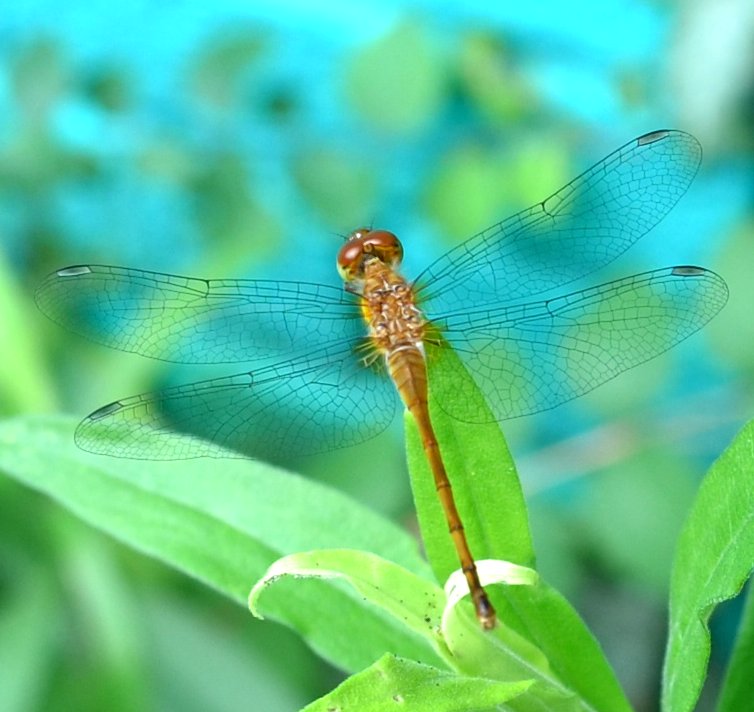
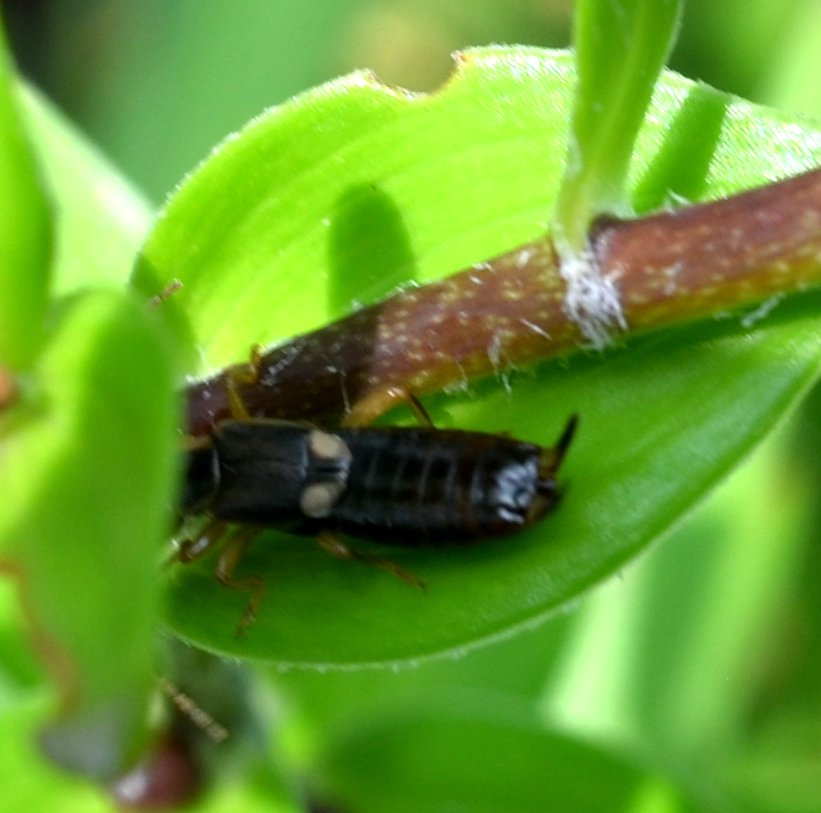
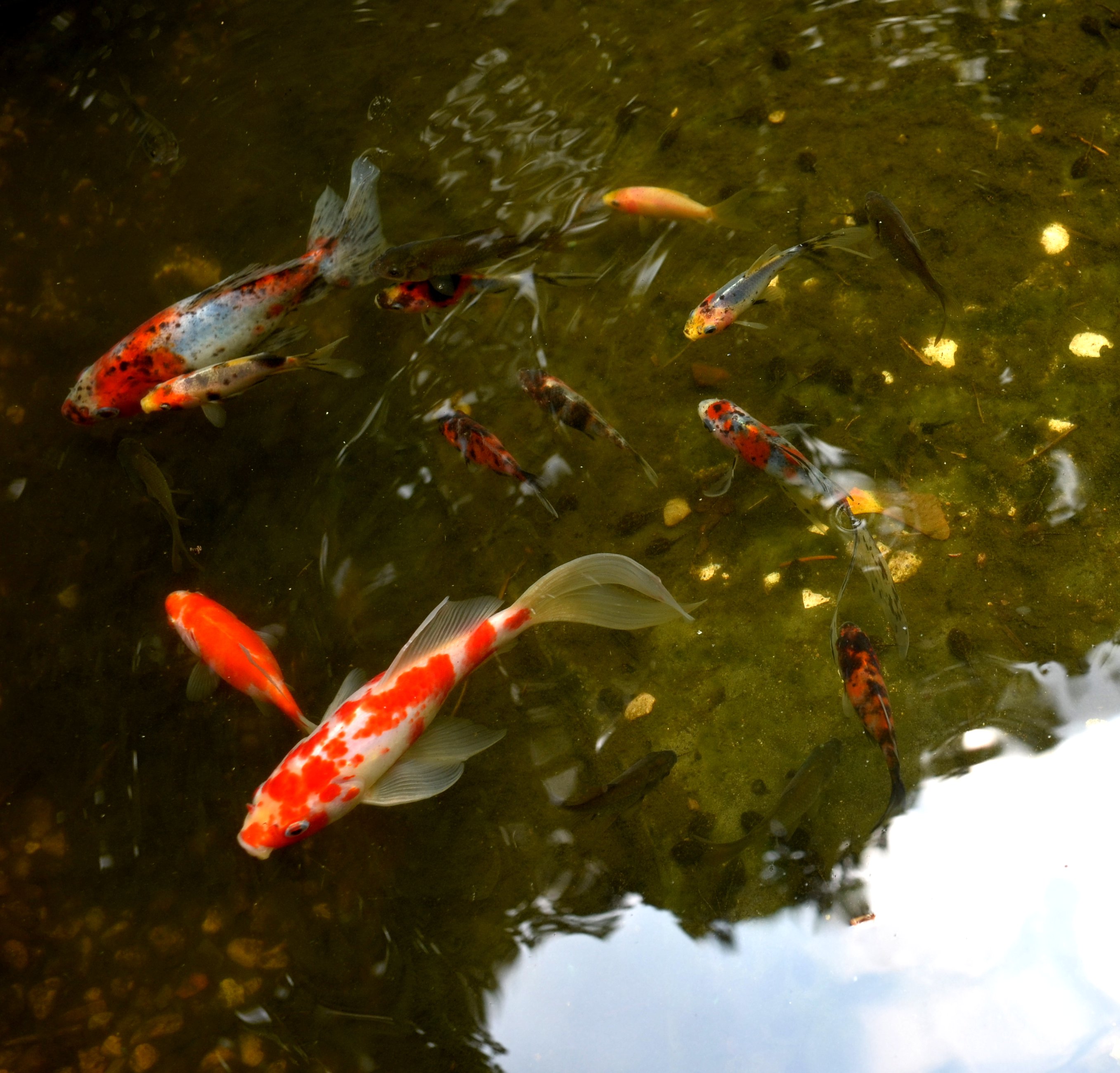
The shop siding isn't attracting so many flies as usual. (It does get hot to the touch when the sun is on it.) But here are a long-legged iridescent fly; a mosquito who has had enough supper, probably from me - look at that rich red blood; and a moth fly.


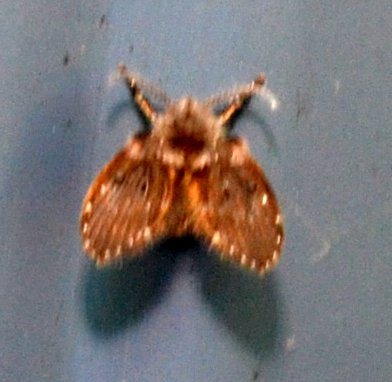
Here are an orange fly, a robber fly of genus Efferia (my friend Kimberlie saw what looks like a match in Texas the same day!), and two identical little flies in the shade section.
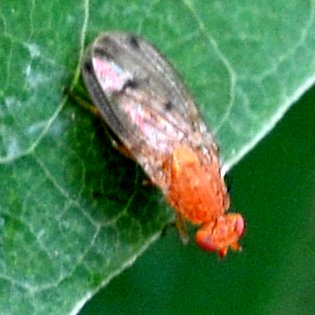
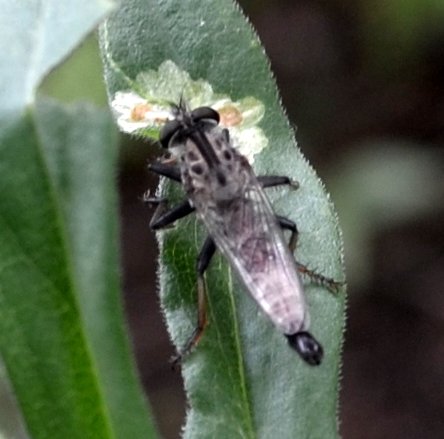

Was that really the whole of the fly collection for the week? We'll see about that. In the meantime, here is a wild grape leaf full of little galls, and in the next image, a gall opening up to betray - what? I wasn't able to get a shot of the inhabitant, so sorry!
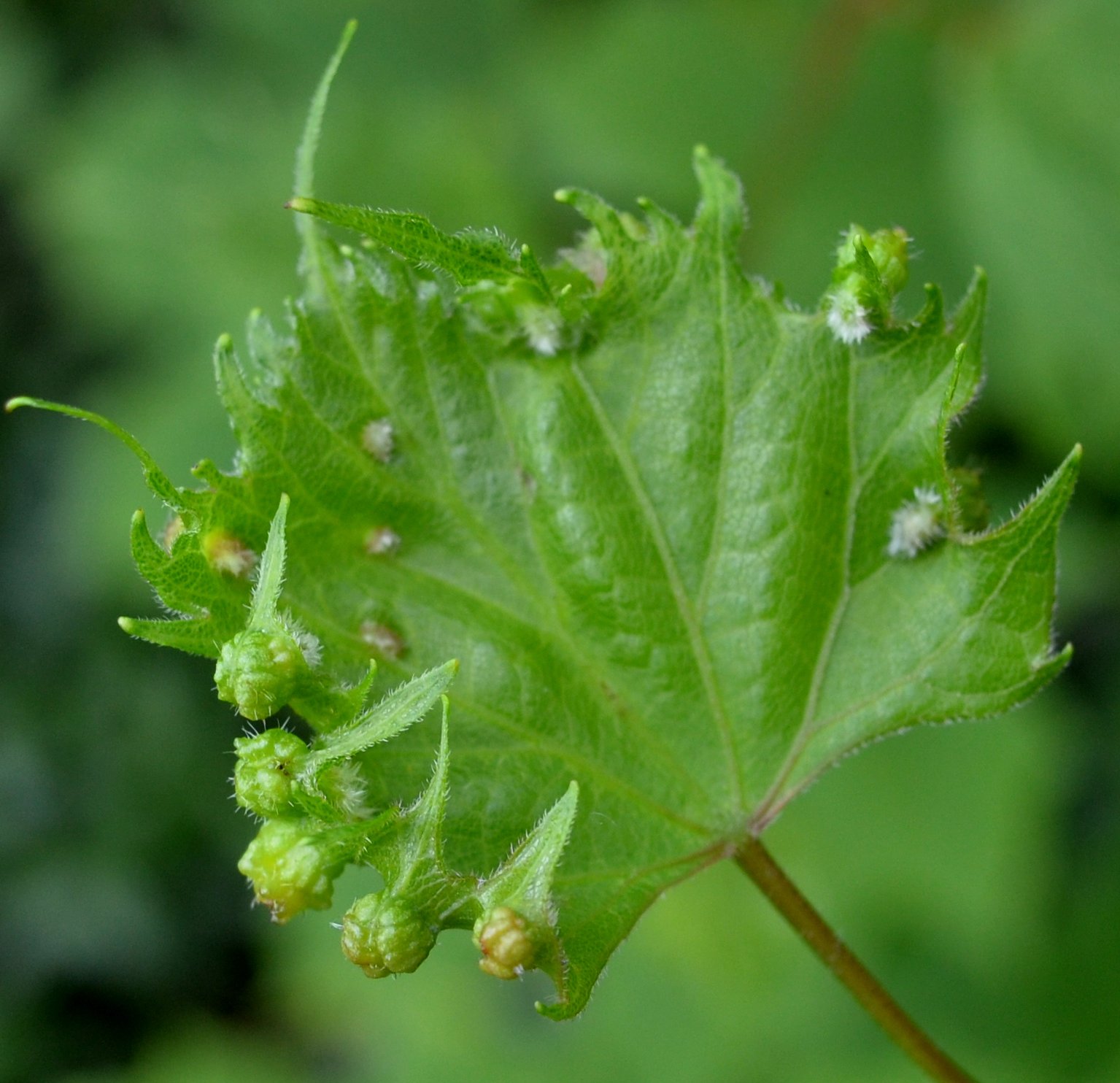
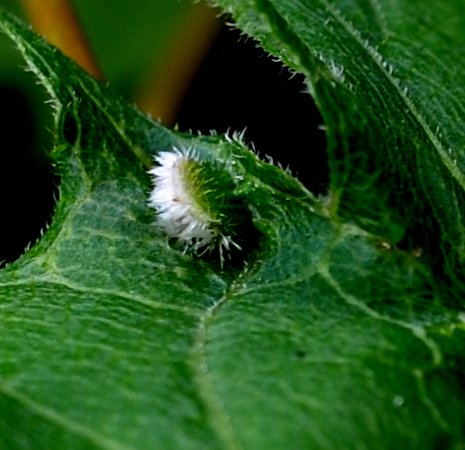
Here are the few harvestman I saw this week. I believe the third one is the same species as the first.

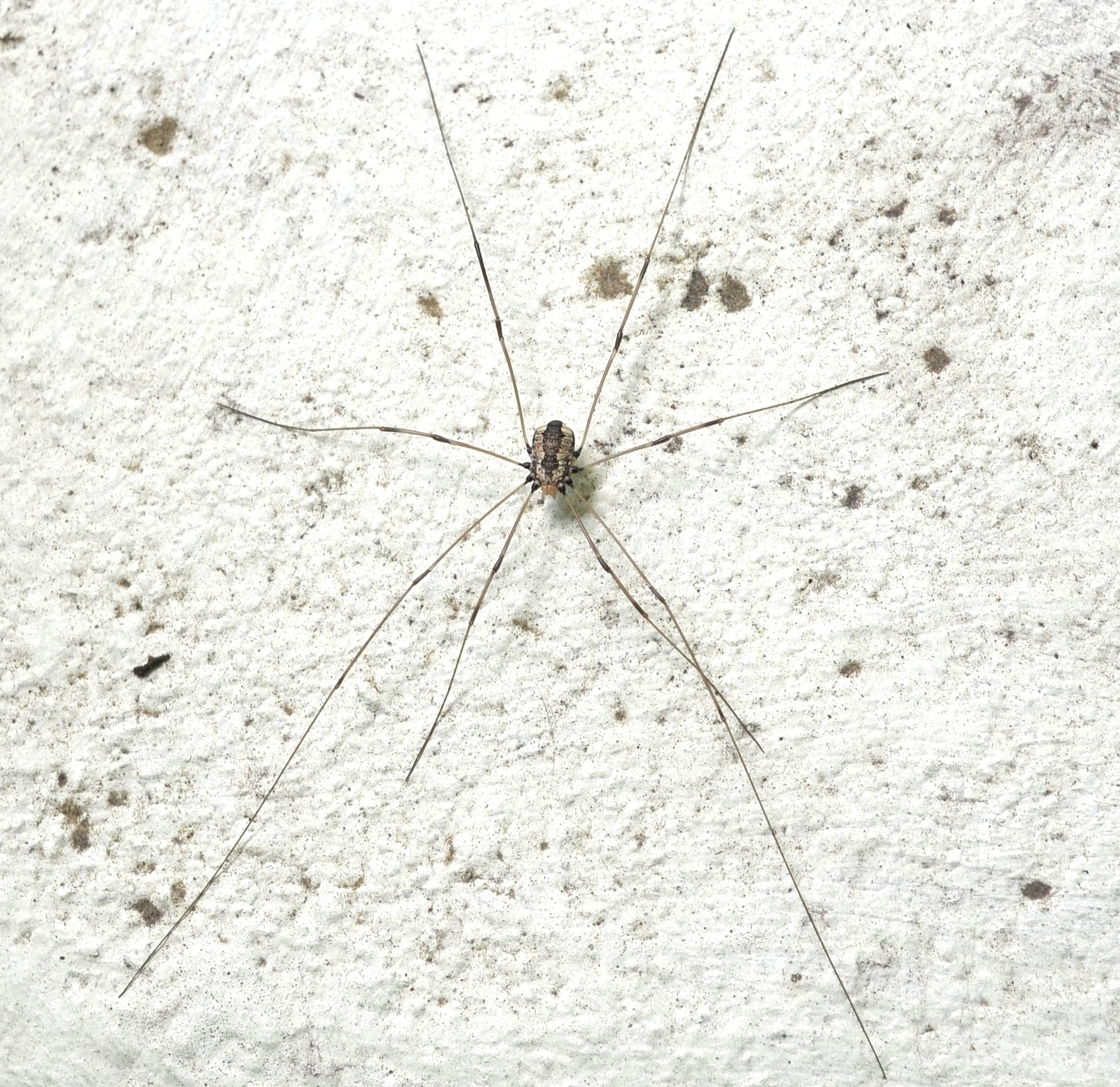
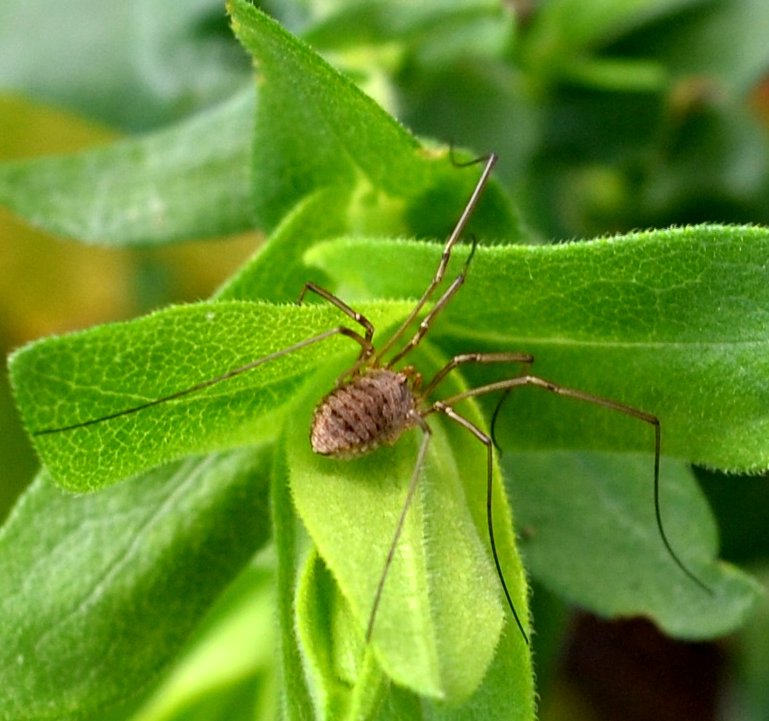
Besides the green lacewing on the stem of aphids at the top of this blog, yesterday afternoon this one landed far above my head on the shop eaves. I don't do ladders, folks, and neither should you. So I got only this shot (and an equally fuzzy one) from this lacewing. A few minutes later this mayfly was spotted equally high up. A few days before I'd seen this very much tinier one on the shop siding on the shady east side. I believe that one is trying to emerge from the pink skin....
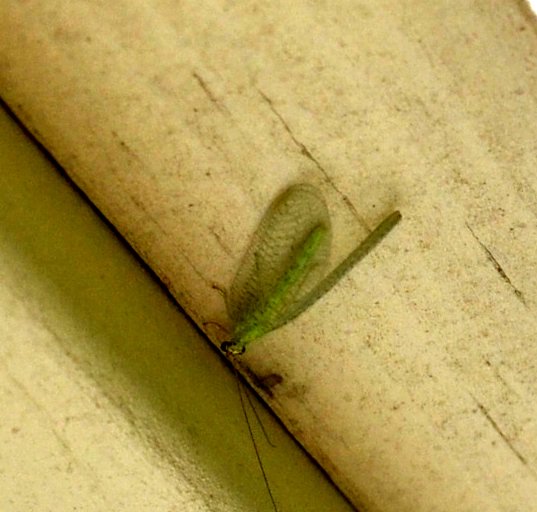
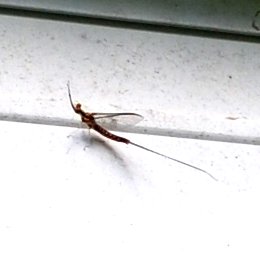
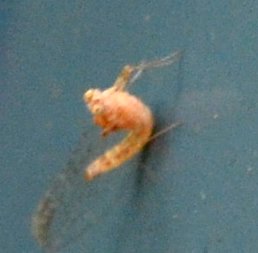
This was the best week for little moths.
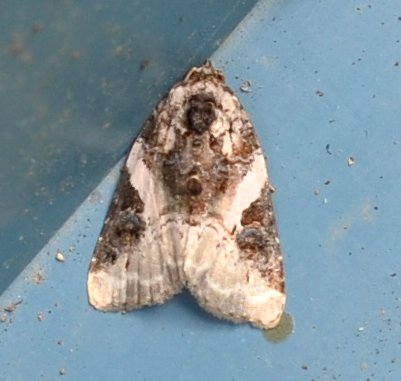
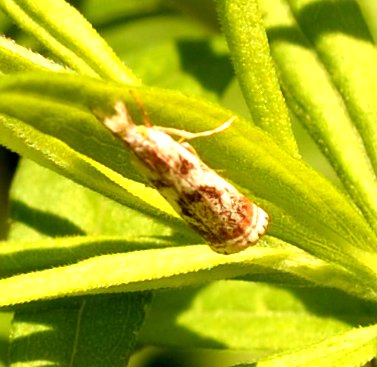
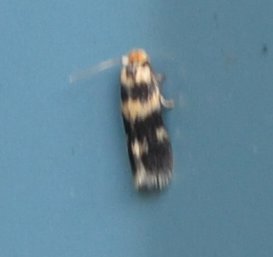
More moths!
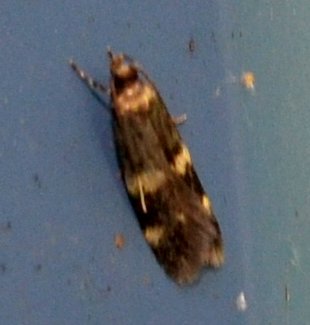
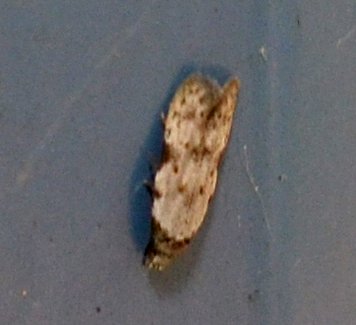
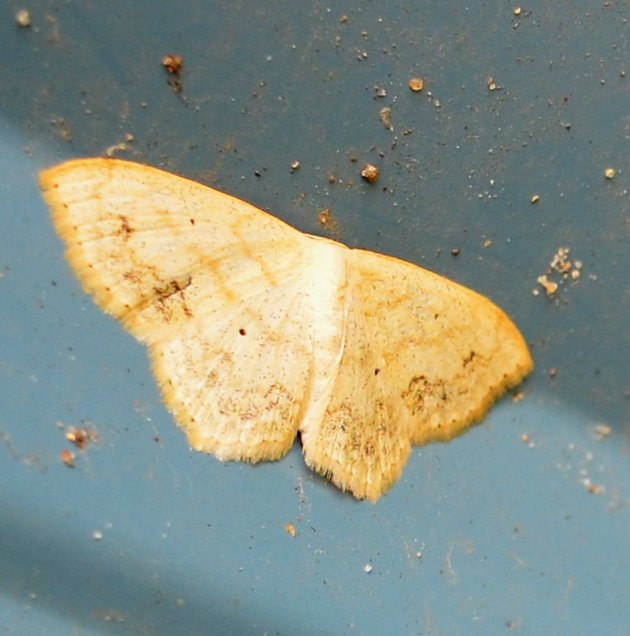

Pillbugs - I never think about them. They are the one thing I can count on every day to be in a certain place. But I don't expect a blue one or a handful of them. These guys must be cleaning up some dead matter on the forest floor.
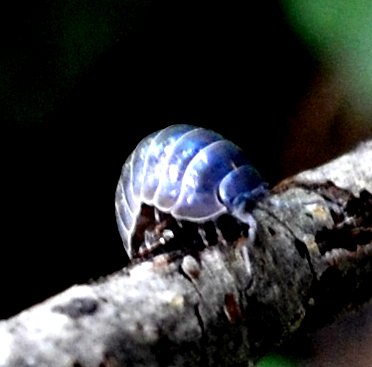
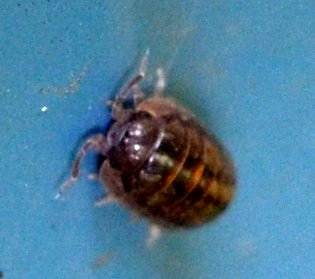
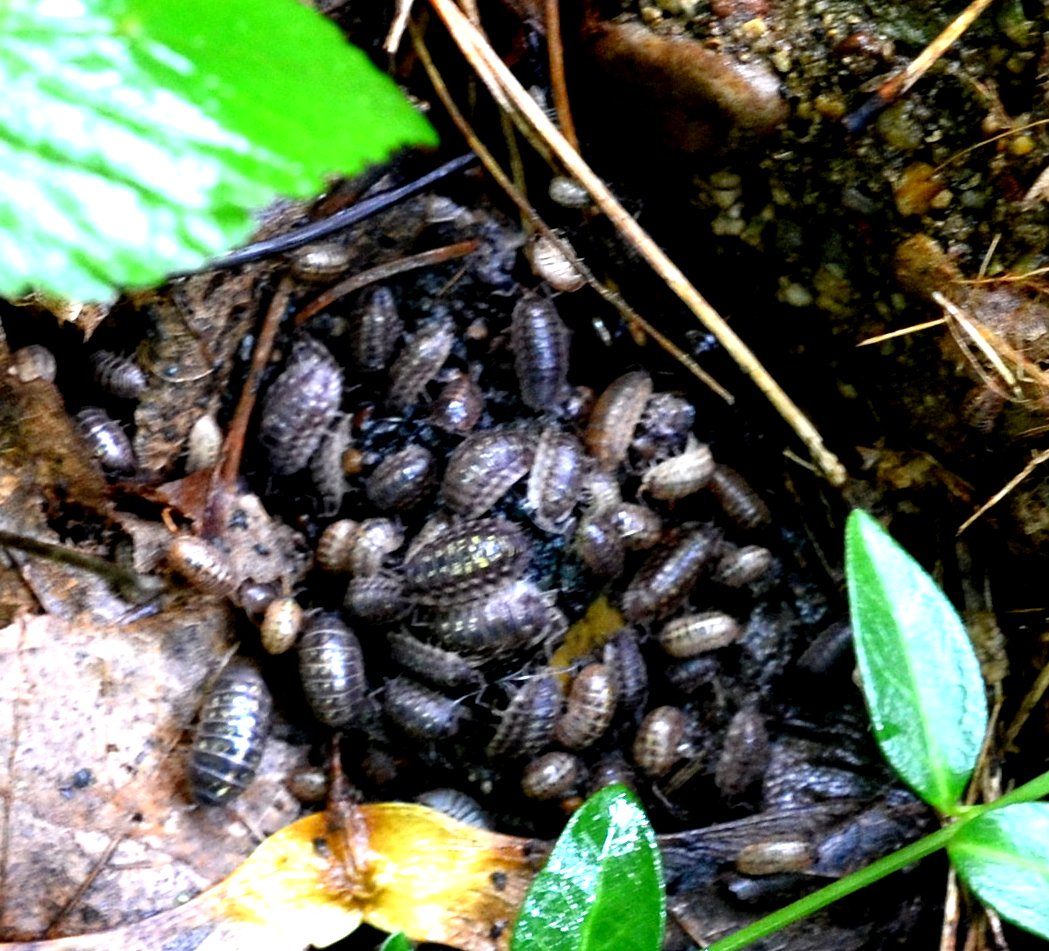
The Pond, however, I always think of as changing from day to day. All those creatures who come by to dip their tails into the water are laying eggs of their species. In the summer I expect at least two kinds of water lilies to be blooming most days. When it rains, the color changes are amazing. The fish rollick in the turbulence as the rain brings it up to level in a short time.

We haven't seen our baby katydids in a while. But a couple of days ago, this lovely creature came out of the shadows. It has the orange shoulder patches and the brown line down its back. Just for reference, here's what it looked like in the last week of June Finally a katydid or grasshopper young female - look at that scimitar-like ovipositor!
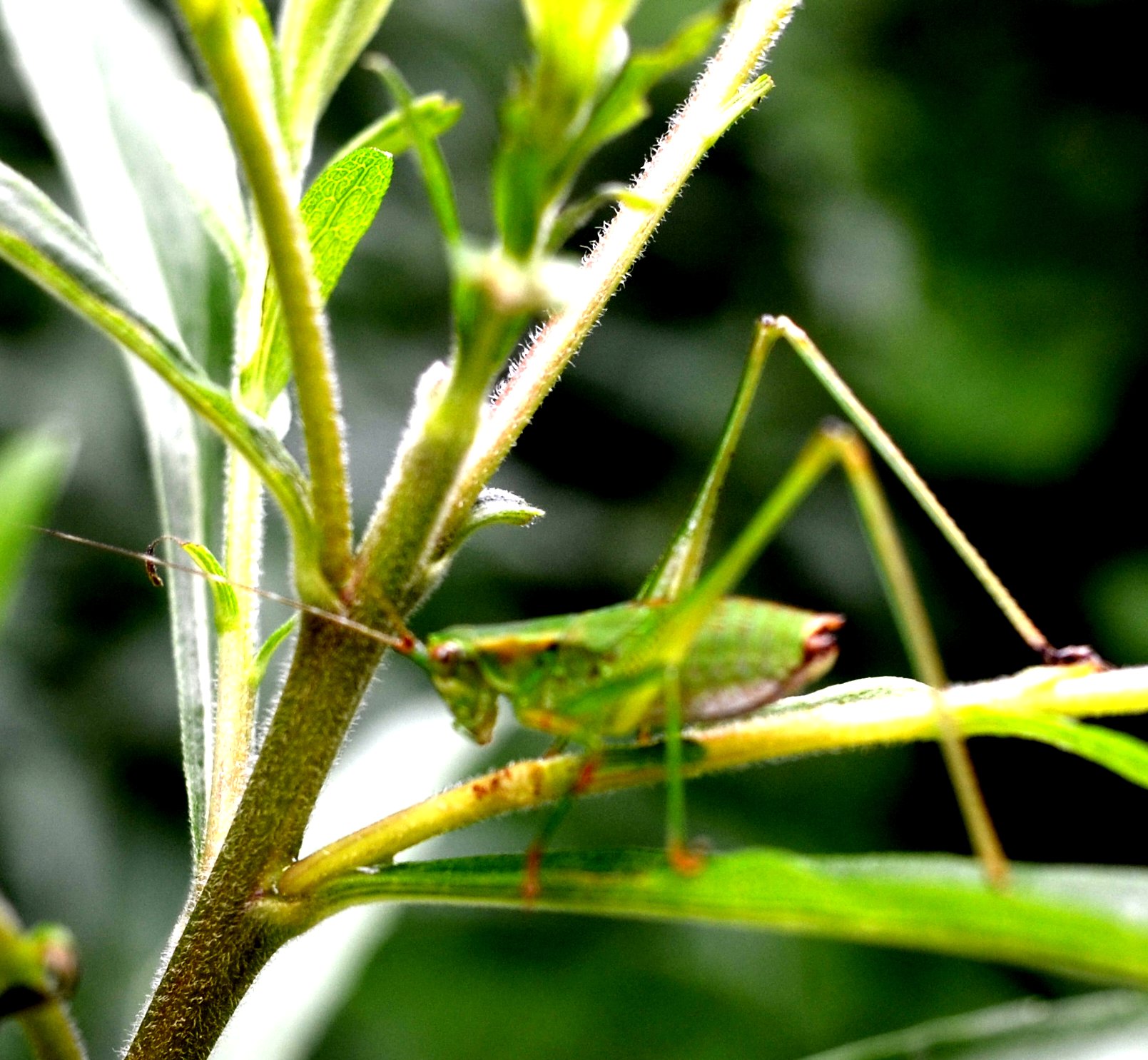

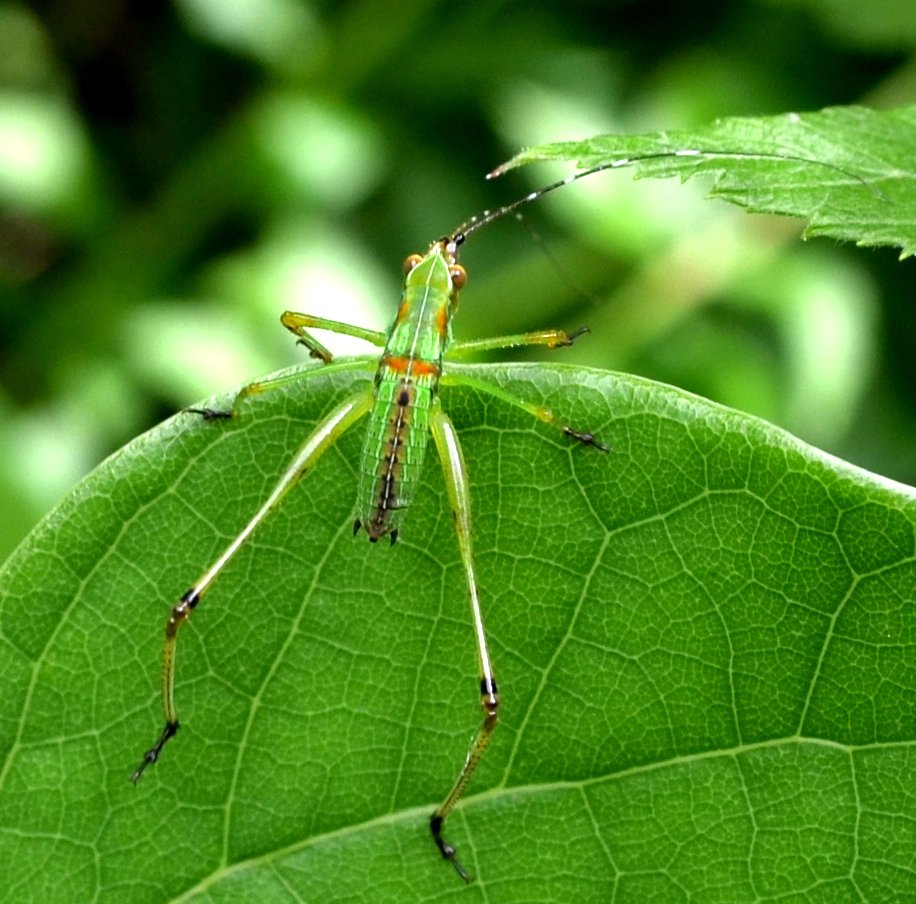
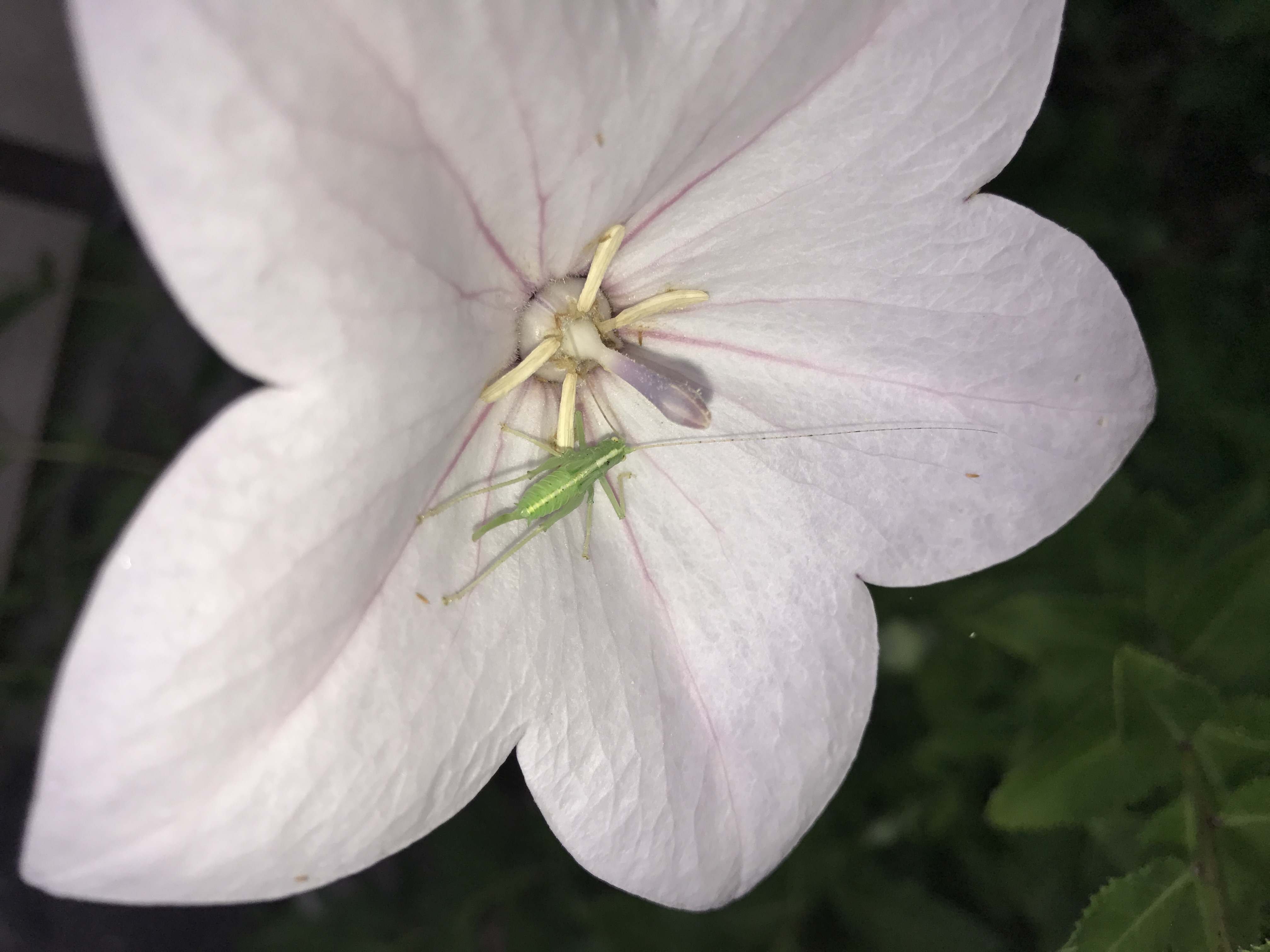
What have the spiders been doing this week? The common house spiders seem to be shades of brown when they get good light. But on the north side of the house, here is one that is mostly black. Another member of the cobweb group is this one, which looks like a long-jawed spider to me. It's called "Enoplognatha ovata" for short.

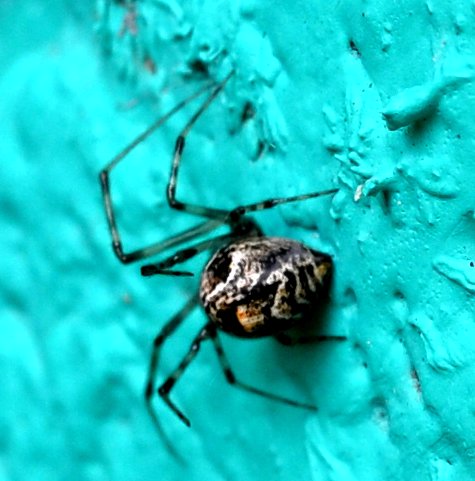
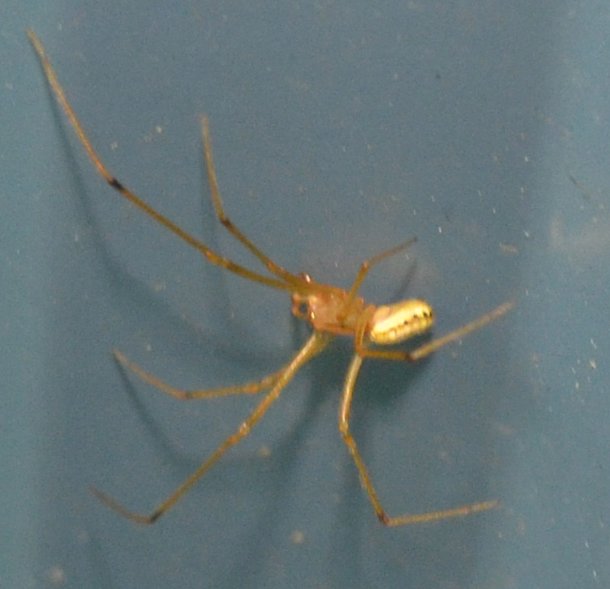
Is this a ghost spider? It's about time for them to be abroad. The grass spider with the pointed tail is growing from a tiny replica to a larger and larger size. Here is a greenish almost round little cobwebber. It may be a 6-spotted spider of some type... We will be seeing more of it now that it has shown up.
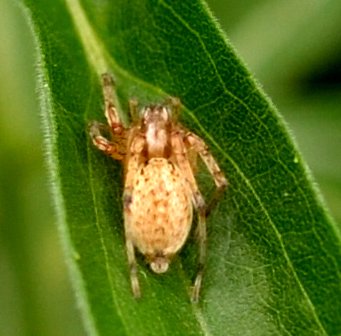

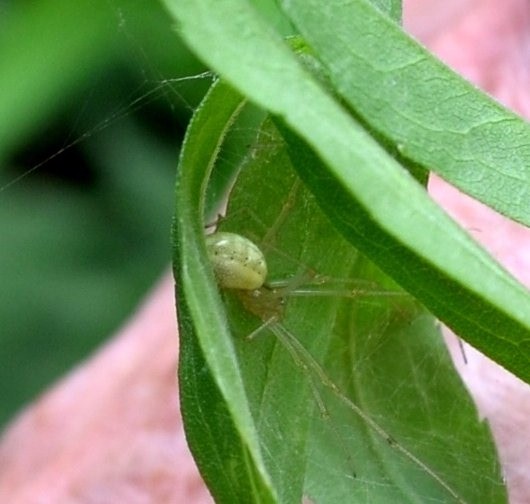
These two tiny spiders seem to belong to a nursery of little black spiders on this other flower at Gina's. This bright orange and brown one is a Cross Orbweaver, which will make sense as its pattern evolves. Last is another orbweaver, the Orchard Orbweaver, which has little stations all over the yard.
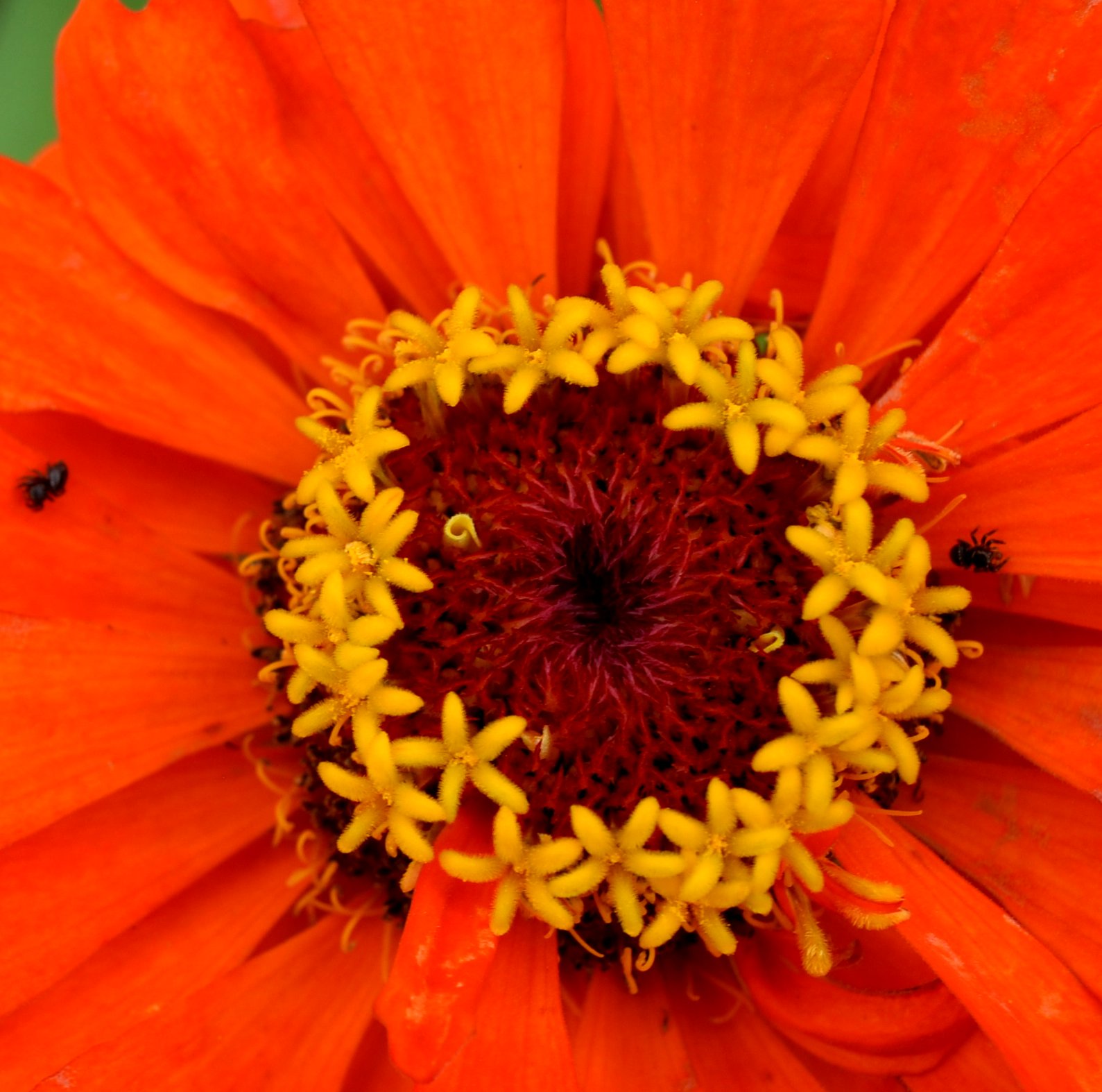

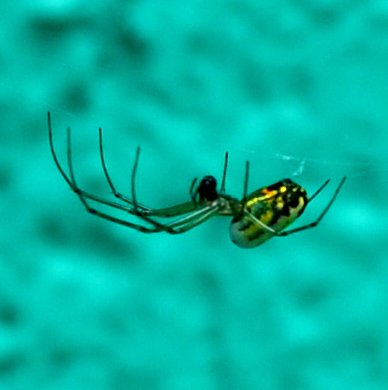
Here is the adult Pirate Spider, with his spooky face. We've been watching these little pirates all spring and now they are finally in their adult form. This one is a male - see his pedipalps, which seem to be lugging heaver paper bags. Not to change the subject, but here is a new baby toad that was running away from me on the far diagonal of the shop. The bigger toad? frog? in this last shot could be a yearling from last year's crop, but it also has the yellow upper lip of a green frog. Anybody out there who is an amphibian maven, please help. I would be so happy to have a green frog come to call like the original one from 2014.
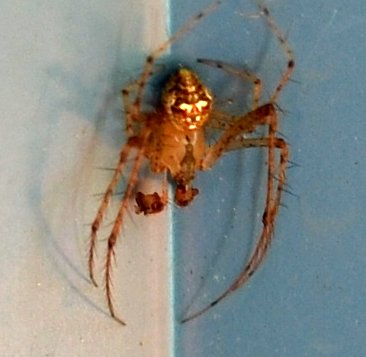
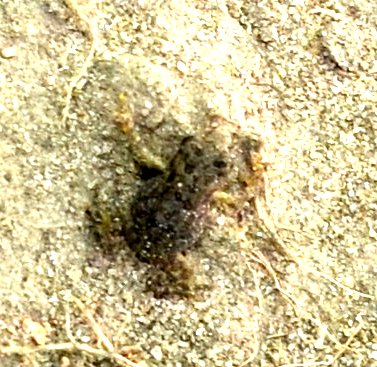
Now let's just look at some of those big tadpoles which are gathering in huge numbers, at the bottom of the shallow end of the pond. Look at that. These two are already growing their tiny back legs, which means they will be growing front legs and losing their tails as they become toadlets and climb out of the pond themselves.
Last is a little group of adolescents.

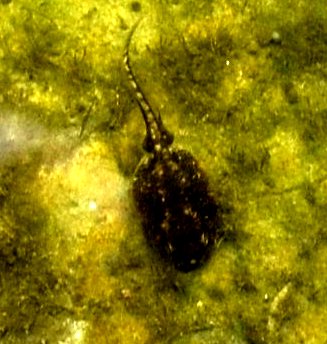
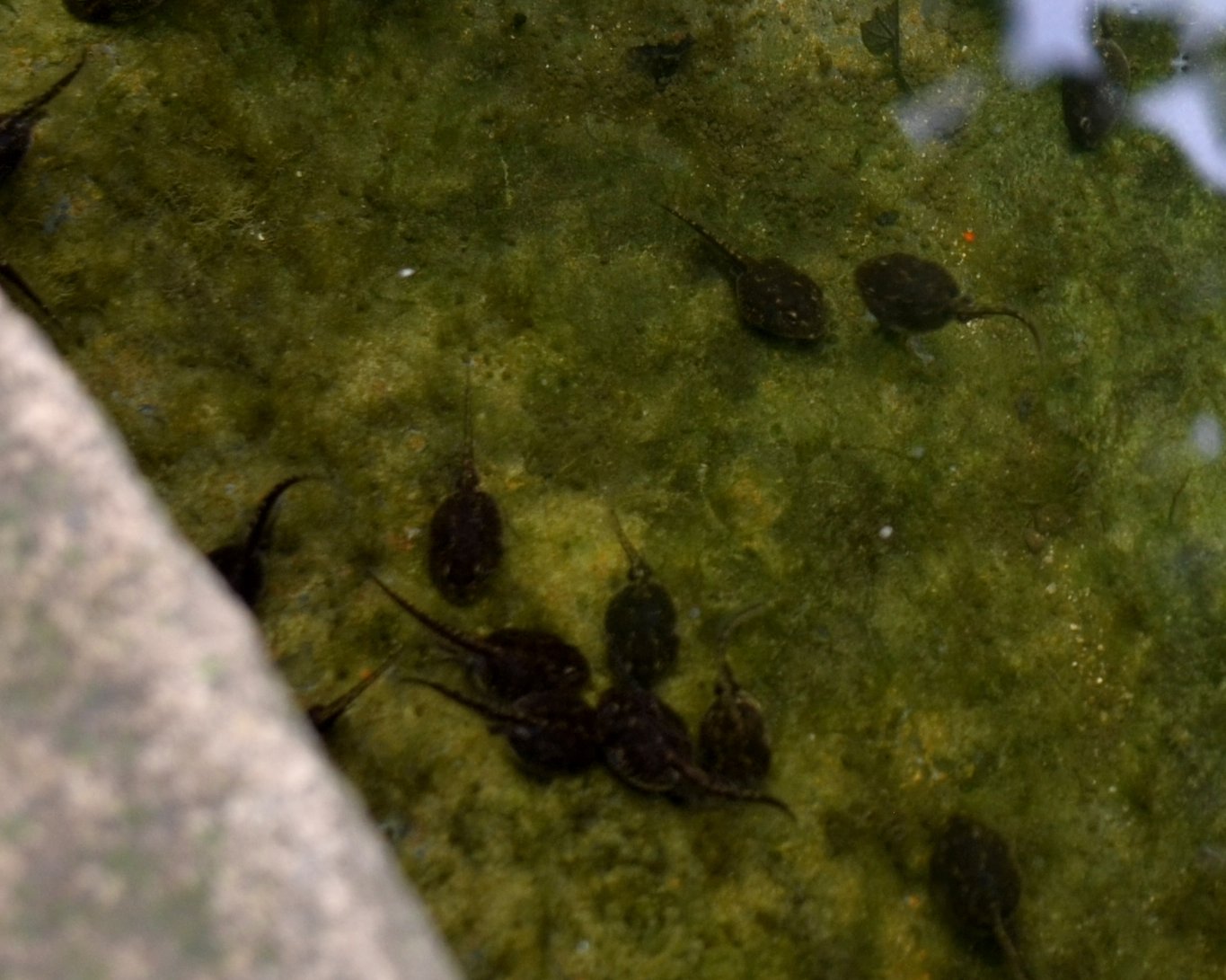
Here are some of the wasps. Now that the goldenrod is getting ready to bloom, we can expect more of these. First is an unknown one, maybe even a fly - it's that unknown. Then there was one very photogenic ichneumon? wasp... And a spider hunting wasp, who has found a good bit for its babies.
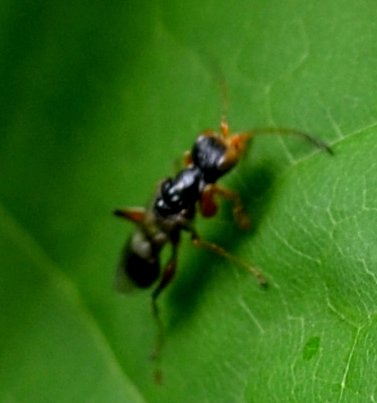
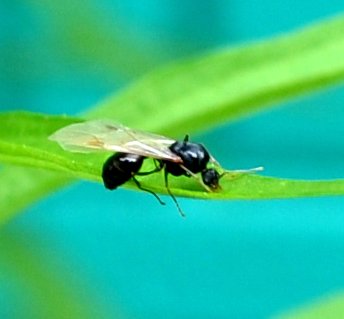

Now here are some of the paper wasps. You already know the European paper wasp, but the next two are images of this female Northern Paper Wasp.
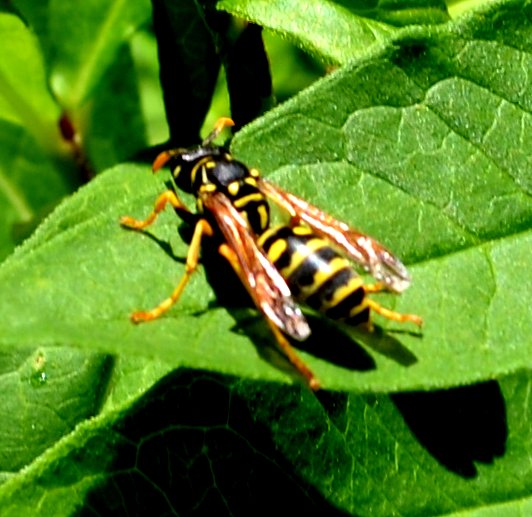
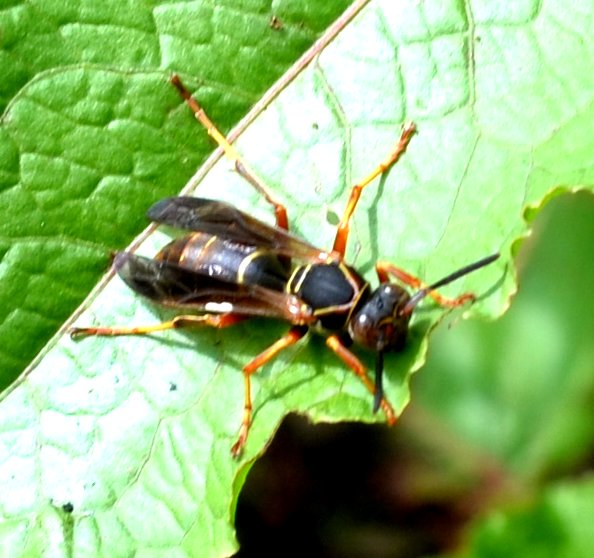
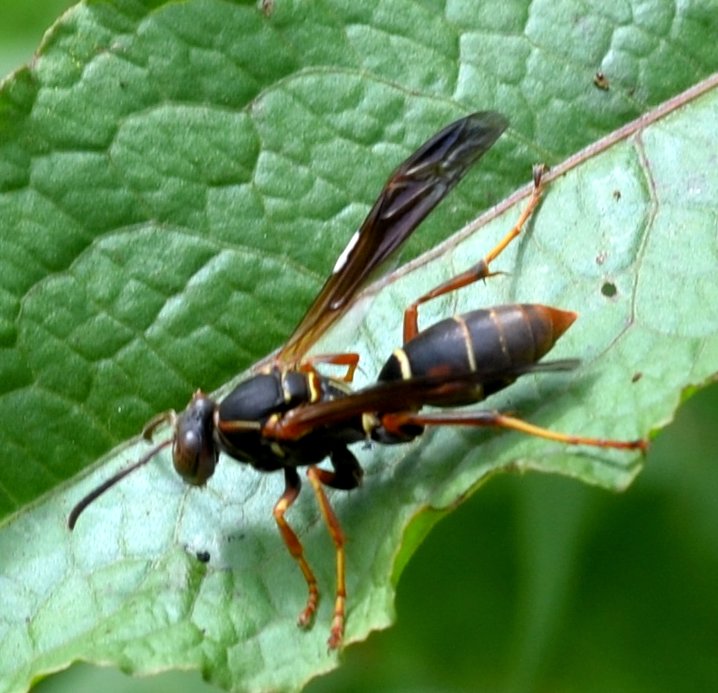
Let's get a last gander at some of the flowers. Here is a battle of two water lilies, a pink one and a magenta. Then a red day lily left here by friends Don and Nancy. And the pink water lily again.
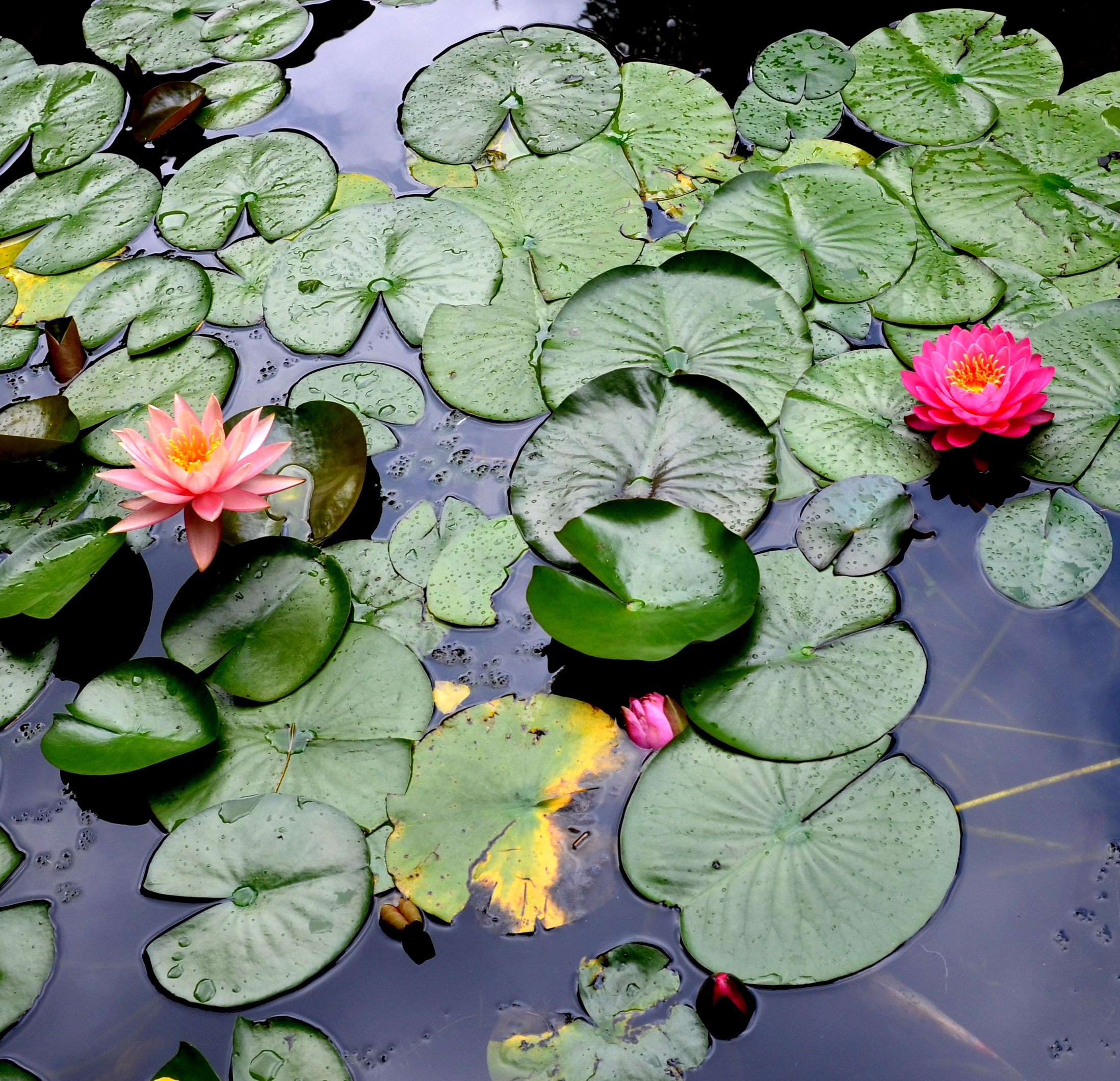
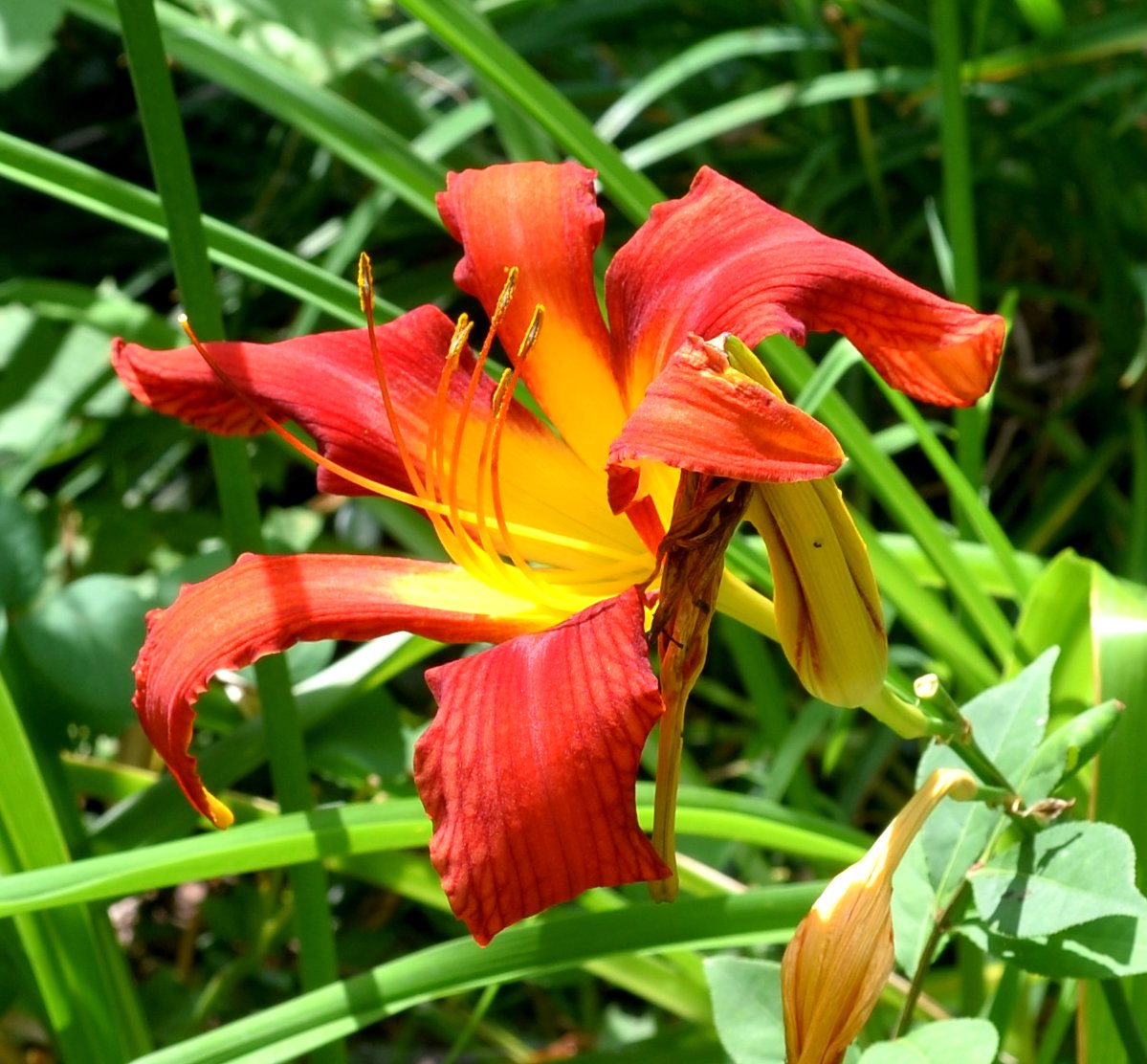
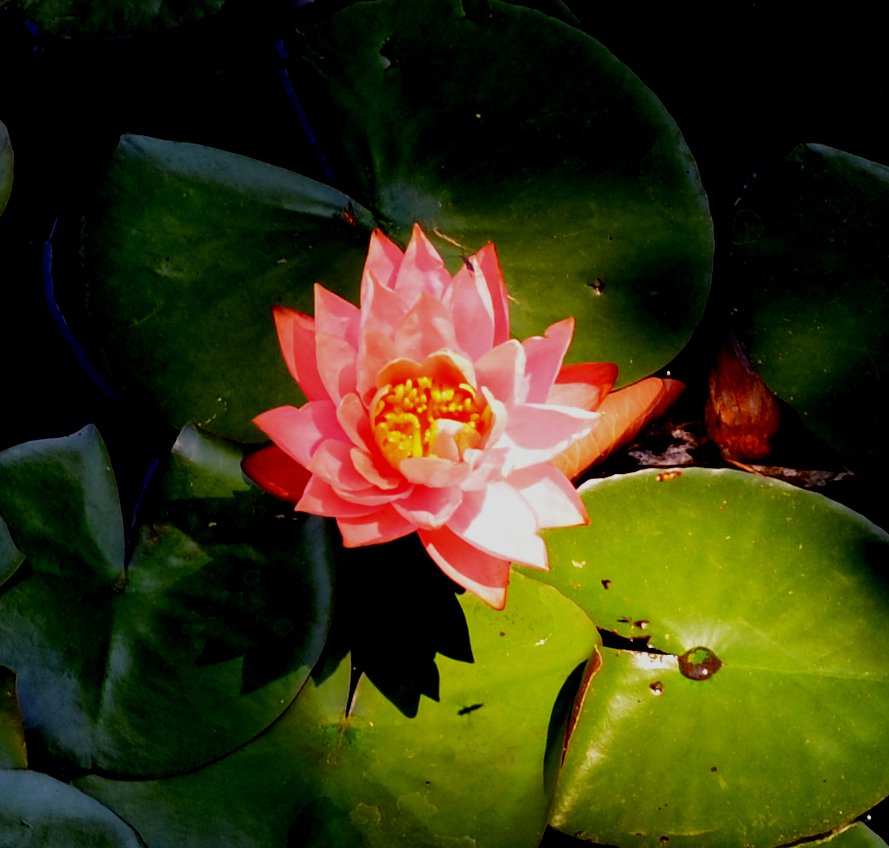
The raspberries are over. But I still have some in the freezer for quite a few more breakfasts! Everyone, have a wonderful midyear, and I'll be back next week to show you anything that goes on around here and is fit to print!
Take good care,
Love, Martha
Back to July 9, 2017
Forward to July 23, 2017
Back to 2017 menu
Back to main menu
copyright Martha O'Kennon 2017






























 7 13 17 1.jpg)






























































